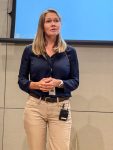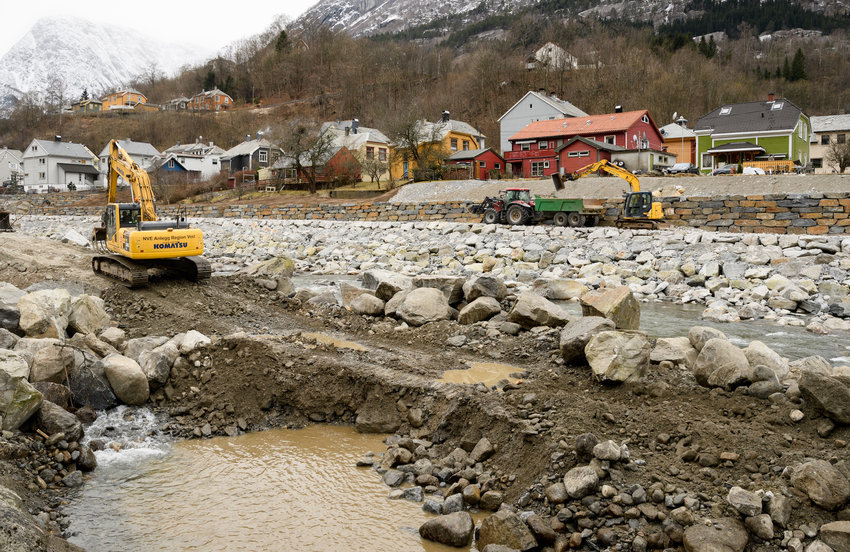“Flood warning, yellow danger level for large parts of Eastern Norway”. The partners in Climate Futures could definitely confirm this status when crossing the flooded Lysakerelva at Statkraft on Monday on their way to discuss the latest research results. In Norway, August has been characterized by extreme weather, and the research carried out in the Climate Futures center has become terribly topical. It is all about developing better climate warnings in order to manage climate risks.
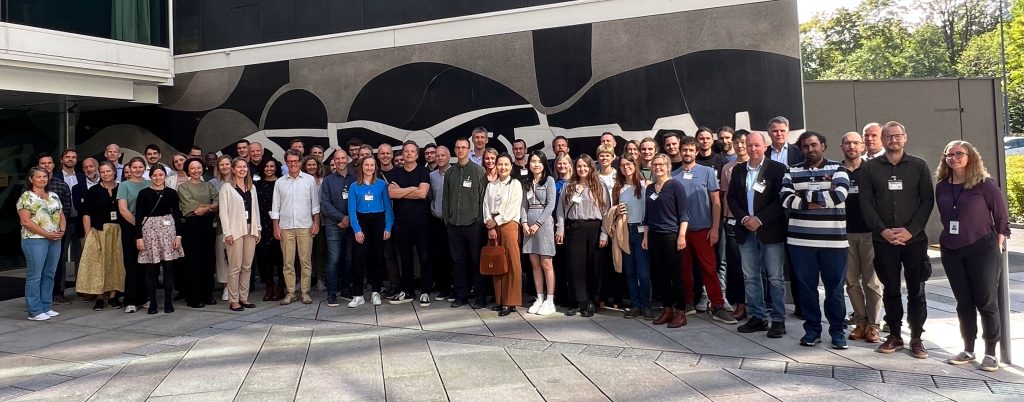
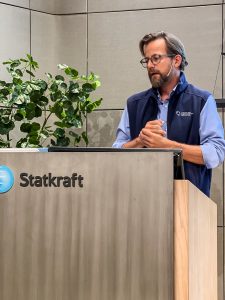
The center is now in its third year, and many of the research projects have started to publish results.
– We are quite unique in a European context. The academic range of the researchers involved means that we are invited to many events, and we also actively visit different institutions in order to be at the forefront of research. We build competence so that we can better employ the knowledge, said center manager Øyvind Paasche at the opening of the general meeting.
The Climate Futures consortium consists of close to 40 partners with knowledge of agriculture, aquaculture, renewable energy, shipping, finance, insurance and risk management. The presentations at the general meeting reflect the industries and the professional fields.
During the event, three keynote presentations were held. In the first, Lonneke van Bijsterveldt (MET) presented Yr’s new 21-day forecast. She also led a longer session on the use of new warning products from MET. David Bresch (ETH Zurich) gave the audience his perspectives on climate risk, and also led a discussion round on the same topic. Mia Eikeset (Norges Bank Investment Management) took us into the world of finance and how climate risk is assessed from this perspective. Climate Future’s research manager, Erik Kolstad (NORCE) held two longer sessions that gave the audience an introduction to the climate system, different types of warnings and which factors influence the models.
In addition, the program consisted of short presentations from different projects:
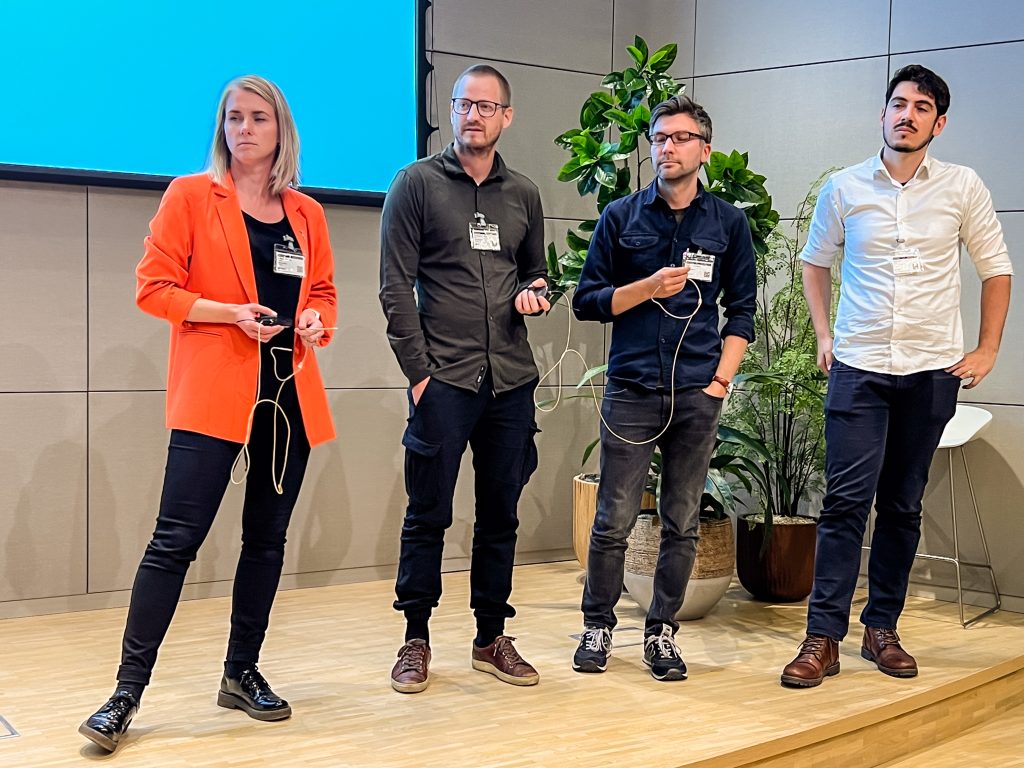
Etienne Dunn-Sigouin (NORCE) works with the insurance company Tryg. Together, they look at how climate risk affects the insurance industry. Tryg is also looking at whether people have become more willing to pay for prevention after the extreme weather “Hans”.
Edson Silva (NERSC) showed how we can use data from e.g. the aquaculture industry to create models that can be used to predict harmful algal blooms in the sea.
Ida Marie Solbrekke (NORCE) collaborates with Western Bulk on how to use seasonal warnings to reduce climate risk in the shipping industry.
Geir Drage Berentsen (NHH) assesses the suitability of areas proposed for the development of offshore wind.
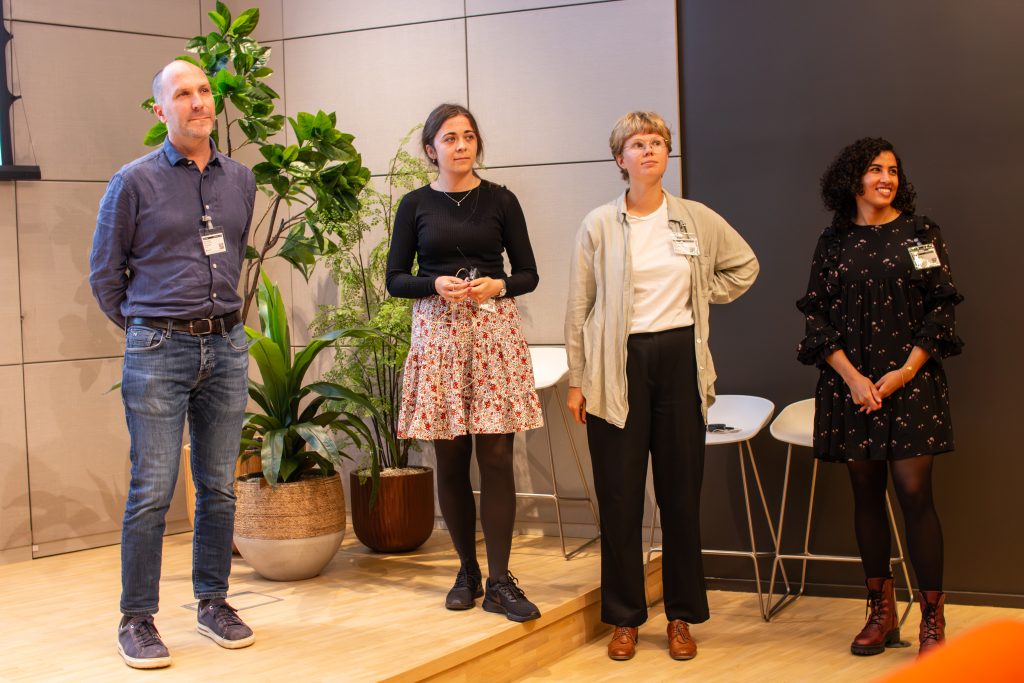
Alex Lenkoski (NR) explained the importance of ensuring that the crops are robust, and how data from Graminor can be used to assess which plant lines are best suited to the future climate.
Using various scenarios, Nada Oubrhou (UiB) has studied how agriculture can make the best use of seasonal warnings in the decision-making process.
Emilie Byermoen (UiB/Statkraft) has used the Norwegian Climate Prediction Model (NorCPM) to assess trends and variation of precipitation and evaporation in various areas in Brazil.
Thea Roksvåg (NR) showed a model for measuring water flow in small waterways, where historical data is used against simulation.
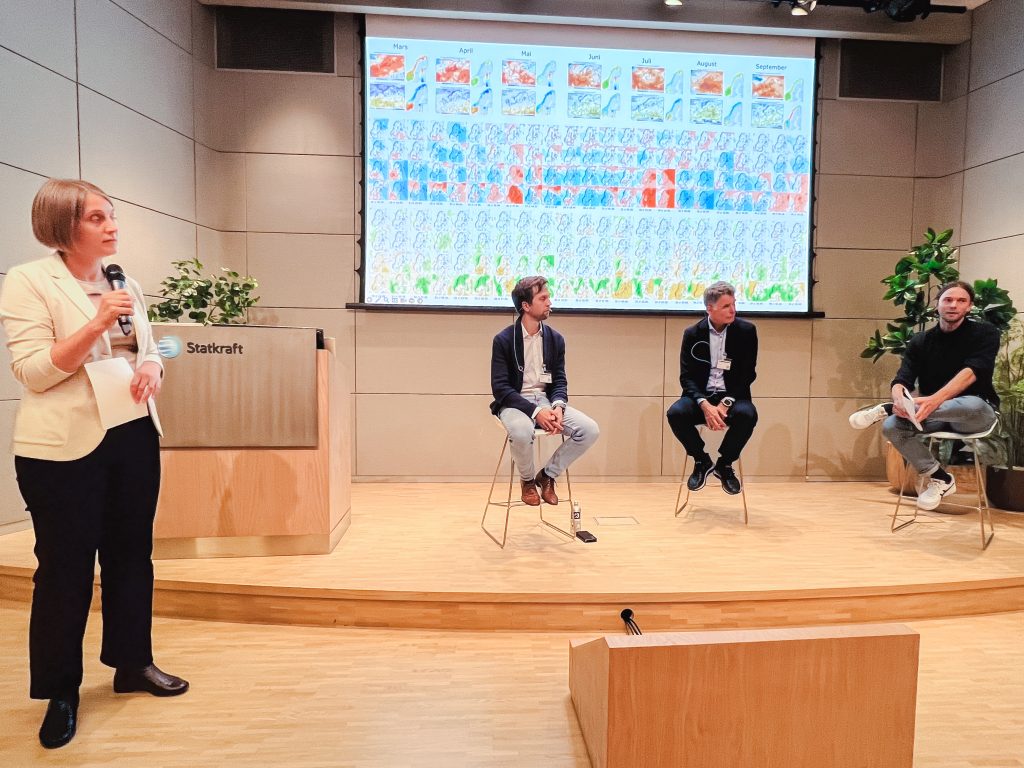
The program also included a panel discussion with the theme “Climate adaptation: Prevention, not firefighting”. From left; chair Thordis Thorarinsdottir (UiO), Erlend Moster Knudsen (Environment Directorate), Karl Ove Aarbu (Tryg) and Manuel Hempel (NORCE).
In the panel discussion, the report from Stortinget, the Norwegian Parliament, titled “Climate change – together for a climate-resilient society” was mentioned as a tool to coordinate the efforts of the many different stakeholders involved in these issues.
The Climate Futures alliance was formed with a basis in the Bjerknes Centre for Climate Research, and the research partners include NORCE (project manager), The University of Bergen, NERSC, the Norwegian School of Economics, the Norwegian Computing Centre, MET Norway, SNF and Statistics Norway.
Photo: Katrine Jaklin, NORCE





